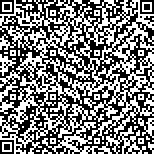| Related citation: | Lei Liu,Jianyue Ren,Ko-Wen Jwo,Yu Zhang,Xianfeng Li.Low Distortion Quick Response Noise Filter Realized with Average Peaks Method[J].Journal of Harbin Institute Of Technology(New Series),2016,23(5):39-44.DOI:10.11916/j.issn.1005-9113.2016.05.006. |
|
| Author Name | Affiliation | | Lei Liu | University of Chinese Academy of Sciences, Beijing 100049, China
Changchun Institute of Optics Fine Mechanics and Physics Chinese Academy of Sciences ,Changchun 130033,China | | Jianyue Ren | Changchun Institute of Optics Fine Mechanics and Physics Chinese Academy of Sciences ,Changchun 130033,China | | Ko-Wen Jwo | University of Chinese Academy of Sciences, Beijing 100049, China | | Yu Zhang | Changchun Institute of Optics Fine Mechanics and Physics Chinese Academy of Sciences ,Changchun 130033,China | | Xianfeng Li | Changchun Institute of Optics Fine Mechanics and Physics Chinese Academy of Sciences ,Changchun 130033,China |
|
| Abstract: |
| The filter proposed in this paper is expected to reduce noise whose frequency is lower than higher order harmonics of real signals. It is based on the distributive characteristics of noise, and uses analog circuits to select the high peak and low peak of the input signal and applies their average in order to reduce random noise. So it has no cutoff frequency and higher order harmonics of real signals are remained. As a result, it gives an instant response to changes in input signals and retains the integrity of real signals. Furthermore, it has only a small phase delay. The simulation results of slew rate, phase delay and spectral analysis under MULTISIM indicate that the quick response noise filter achieves a high slew rate of 472 V/ms and the phase shift is nearly zero. By having it used in a color tester design, it is also demonstrated that the proposed filter effectively reduces noise and remains signal integrity. With the filter’s help, the relative standard deviation of the spectrograph decreases from 1% to 0.22%, indicating better stability. |
| Key words: low distortion quick response filter cutoff frequency |
| DOI:10.11916/j.issn.1005-9113.2016.05.006 |
| Clc Number:TN713 |
| Fund: |






